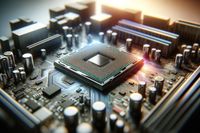Quantum Computing and the Growing Importance of Patents
An exploration of the newest trends in the quantum computing industry through the lens of patent landscape.

Patent Landscape
The publication rate of new quantum computing patent applications continued to rise in 2023. China leads in the number of published quantum computing patent applications, followed closely by the US, Europe, and Japan. Other countries such as South Korea, Canada, Australia, India, Taiwan, and Israel also filed significant numbers of patent applications.
Superconducting quantum computing is the most commercially mature approach, with the highest number of patent applications. Photonic, quantum dot, trapped ion, and topological methods also saw considerable patent activity. Neutral atom, nuclear magnetic resonance, and nitrogen vacancy quantum computing are primarily being developed by academic institutions and early-stage companies.
While the number of patent applications for superconducting quantum computing shows a healthy growth trend, there has been a slight slowdown. Photonic and trapped ion quantum computing have seen rapid increases in patent applications. Topological quantum computing saw a slight decrease in 2023, while quantum dot technology experienced a peak in 2019 and has been declining since.
Discussion
As the quantum computing sector continues to grow, so does the rate of patenting. Manufacturers of commercially viable quantum computers will become targets for patent assertions. Patents focusing on the physical realization of quantum computers are important and encompass foundational technologies. However, they account for a small fraction of all quantum computing patents.
Even inventions not centered on a specific physical realization can benefit from detailing hardware features. Disclosures of higher-level techniques or applications adapted for particular physical realizations can strategically differentiate prior art and position the patent for potential assertions.
Patent data reveals varying levels of maturity among quantum computing modalities. Superconducting technologies show a lead, while emerging fields like neutral atom quantum computing are seeing increased patent activities. The global competition in quantum computing is intense, with the US leading in patent applications for all key modalities, but often holding a smaller share compared to China and Europe.
Companies may encounter regulatory hurdles in certain markets due to the perception of quantum computing as a matter related to national security. Patent licensing can be an alternative revenue source in inaccessible markets. It may be strategically beneficial for companies to seek patent protection not only in their operational markets but also in the home countries of their primary competitors.
Author's Note
The data in this post were obtained using custom queries on LexisNexis TotalPatent One®, spanning 20 years from January 1, 2004, to December 31, 2023. There is typically an 18-month delay between filing and publication of a patent application, so the data offer a somewhat delayed reflection of patent trends.



